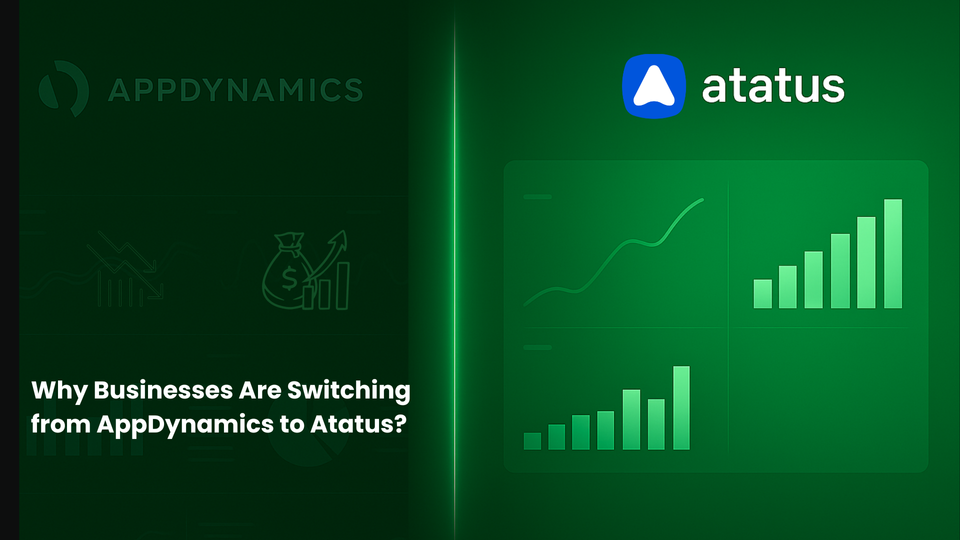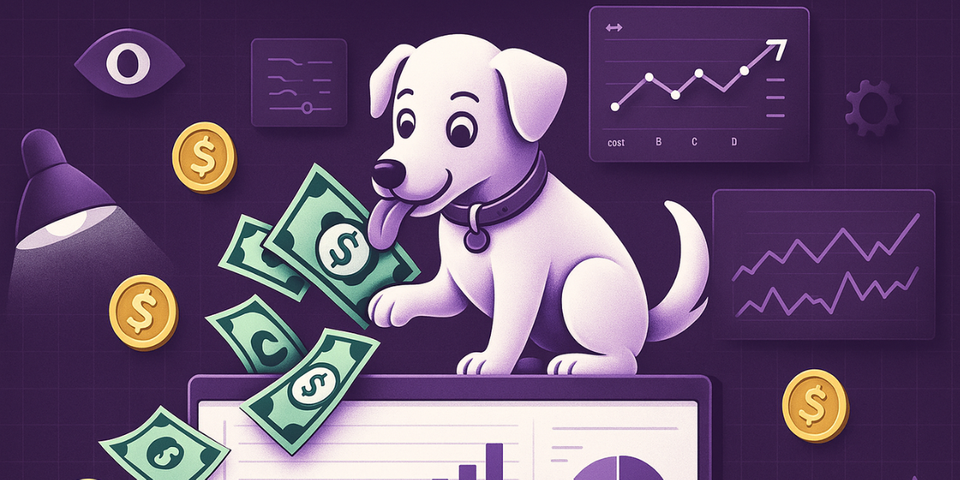What is Python Application Performance Monitoring? - [A Complete Guide]
A recent study looked at real-world Python programs and found something important: Python isn’t the main reason apps slow down. The real problems come from inside the code like poor logic, memory issues, and slow database queries.
The problem is, these issues often go unnoticed. Your app may seem fine until users start complaining about slowness or things start breaking under pressure.
If you're running Django APIs, Celery background jobs, or FastAPI microservices in production, you need more than just logs. You need to see how your app is really performing what’s fast, what’s slow, and what’s going wrong.
That’s where Python performance monitoring comes in.
In this article, we’ll explain what is Python performance monitoring, why it’s important, what to track, how to monitor your Python applications, and which tools can help. Additionally, you’ll learn real-world examples and best practices to help you stay ahead of performance issues.
In this guide, you’ll learn:
- What Is Python Application Monitoring?
- Why Is Python Performance Monitoring Important?
- Why Should You Monitor Python Applications?
- What Should You Monitor Python Applications?
- 10 Best Practices for Python Application Performance Monitoring
- Real-World Examples and Use Cases
- Which Is the Best Tool for Python Performance Monitoring?
- How to Monitor Python Applications with Atatus APM?
- FAQs on Python Application Performance Monitoring
What Is Python Application Monitoring?
Python application monitoring is the process of continuously observing, measuring, and analyzing the behavior and performance of Python-based applications. It helps teams detect anomalies, optimize resource usage, pinpoint performance regressions, and maintain reliability in production.
This involves tracking metrics like response time, throughput, CPU usage, memory consumption, error rates, and database queries in real-time. Effective Python monitoring provides deep visibility into Python application internals, third-party service calls, and infrastructure dependencies.
Why Is Python Performance Monitoring Important?
As Python applications grow and handle more traffic, it's easy for performance issues to slip through unnoticed. These problems like slow response times, memory leaks, or inefficient database queries often don’t cause immediate failures. Instead, they build up quietly over time, gradually affecting user experience and system stability.
Without performance monitoring, teams are left guessing why something broke, where the slowdown occurred, or how a recent code change impacted the app. This lack of visibility makes it harder to debug problems, ensure reliability, and deliver consistent performance.
Python performance monitoring gives teams the insight they need to understand how their applications behave in real-world conditions. It helps detect hidden issues early, improves development workflows, and supports better decision-making when it comes to scaling, deploying, or optimizing applications.
In short, it helps teams to move faster, fix issues sooner, and keep their Python applications running smoothly.
Why Should You Monitor Python Applications?
Even well-built Python applications can suffer from performance issues in database queries, the challenge is that these issues don’t always cause immediate failures. Instead, they slowly degrade the performance of your Python application over time, leading to poor user experiences, reduced reliability, and increased operational costs.
Without proper Python application monitoring, development and DevOps teams often struggle to understand what’s slowing down the system or how recent changes are impacting performance. Logs alone may not reveal the full picture especially in complex and distributed environments.
Python performance monitoring provides real-time insights into how your application behaves in production. It helps you catch problems early to deliver faster and more reliable experiences for your users.
By monitoring key metrics such as response times, error rates, memory usage, and transaction volume, Python performance monitoring helps detect issues early, optimize resource usage, and maintain consistent application performance.
What Should You Monitor Python Applications?
- Response Time: Measure how long your app takes to respond to requests. Helps identify slow endpoints, APIs, or background jobs affecting user experience.
- Throughput: Track the number of requests or tasks handled per second. Useful for understanding load capacity and app performance under pressure.
- Web Transactions: Monitor full HTTP request cycles, including routes, payloads, and response codes. Helps trace user flows and spot problem areas.
- Error Rate: Keep track of exceptions and failed operations. Helps detect bugs, broken endpoints, and recurring issues before they impact users.
- Deploy Tracking: Link each deployment to performance metrics. Quickly see if new code causes slower responses, more errors, or resource spikes.
- Memory Usage: Track how much memory your app uses over time. Identifies memory leaks, garbage collection issues, and inefficient data handling.
- Detailed Tracing: Gain full visibility into each function, query, and external call. Helps pinpoint exactly where time is spent in your code.
- Slow Query Insights: Identify slow or inefficient database queries. Find missing indexes, N+1 issues, and queries that slow down your Python app.
10 Best Practices for Python Application Performance Monitoring
#1 Instrument All Critical Paths
Effective performance monitoring starts with instrumenting everything that matters. This includes:
- API endpoints (REST, GraphQL, etc.)
- Background jobs like Celery, RQ, or custom task queues
- Third-party services like payment gateways or analytics platforms
- Database interactions, including ORM queries and raw SQL
By instrumenting these areas, you ensure visibility into the most performance-sensitive parts of your Python application.
For example, tracking slow API endpoints or a spike in background task latency can immediately highlight degraded user experience or infrastructure issues.
#2 Track Deployments Closely
Every deployment brings risk; new features can introduce performance regressions, memory leaks, or error spikes. To mitigate this:
- Tag releases or commit hashes in your APM tool
- Compare pre- and post-deployment metrics like response times, throughput, error rates, and memory usage
- Automate this tracking through your CI/CD pipeline
When something goes wrong, you can correlate the performance regression with a specific deployment event and roll back or hotfix faster. This minimizes downtime and avoids relying solely on user-reported issues.
#3 Use Tags for Context
Generic metrics aren’t enough. Add contextual metadata (tags) to traces, logs, and spans. Examples include:
user_idto trace issues back to a specific user- region to identify latency anomalies across locations
plan_typeortenant_idto monitor VIP vs. free-tier users
This allows powerful filtering, aggregations, and dashboards based on real business dimensions. For example, if enterprise users on the EU cluster are facing performance issues, you’ll know instantly without combing through logs manually.
#4 Monitor Memory Over Time
Memory issues rarely cause your app to crash instantly, but they silently degrade performance. You should:
- Track heap usage, garbage collection (GC) pauses, and object allocation trends
- Identify slow memory leaks and inefficient caching
- Monitor worker restarts or swap usage that may hint at memory saturation
Over time, this gives you insight into how memory behaves in production under real load, not just local tests. Tools like tracemalloc, objgraph, and built-in memory profilers are great, but production-safe APM platforms provide ongoing, low-impact memory tracking.
#5 Catch and Analyze All Exceptions
Uncaught exceptions and silent errors can slip into production unnoticed. To avoid this:
- Capture all exceptions, including handled ones that may indicate degraded performance (e.g., retry loops)
- Log full stack traces, request context, and user/session data
- Correlate errors with the transaction or span that triggered them
This lets your team resolve bugs proactively before they impact users. Ensure you also alert on increased error rates or exception patterns, especially after a new release or infrastructure change.
#6 Use Distributed Tracing Across Services
In cloud-native architectures, a single user request might touch multiple services written in Python. Distributed tracing helps by:
- Providing end-to-end visibility across service boundaries
- Showing latency breakdowns between internal and external hops
- Revealing root causes of cascading failures
Set up context propagation (via headers) and instrument all services with OpenTelemetry or a compatible APM like Atatus. This is essential when debugging issues in a Kubernetes or serverless setup.
#7 Monitor External Services
Most Python apps depend on external services like databases, queues, and APIs. But these dependencies can become performance bottlenecks. You should monitor:
- Latency and error rates for Redis, PostgreSQL, MongoDB, etc.
- Timeouts and retries in HTTP requests to third-party APIs
- Queue length and consumer lag in Kafka, RabbitMQ, or Celery workers
This helps isolate whether a slowdown is caused by your app logic or an external system. Understanding exactly which dependency is failing or slowing down lets you prioritize the fix whether it’s optimizing a query or increasing timeouts.
#8 Avoid Overhead in Production
Performance monitoring shouldn't come at the cost of performance. Some APM tools introduce high CPU or memory overhead, especially in high-throughput environments. To avoid this:
- Choose an APM built for production safety, like low CPU usage, async instrumentation, minimal blocking
- Use sampling and trace limits to reduce the impact during high load
- Avoid enabling heavyweight profilers in production unless in a controlled manner
Tools like Atatus are designed for production readiness with negligible performance impact, even in demanding Python environments.
#9 Combine Logs with Traces
Logs alone can be overwhelming without context. But when combined with traces, they become much more powerful:
- Link logs with trace IDs or request IDs
- Visualize logs alongside traces in your monitoring tool
- Jump from a performance issue trace directly to related logs
This correlation allows teams to debug much faster, seeing not just what happened (via logs) but also why and where (via traces). It enables seamless root cause analysis across metrics, logs, and traces.
#10 Benchmark Regularly
Don’t wait for a performance issue to hit production which simulates load in advance:
- Run benchmark tests
- Test against realistic traffic profiles (peak, burst, gradual increase)
- Automate these tests post-deployment or weekly as part of SRE routines
Benchmarking helps find bottlenecks under stress, validates performance improvements, and assures your app scales gracefully under load. Combine this with monitoring to see how performance metrics change under pressure.
Real-World Examples and Use Cases
#1 Problem: Slow Checkout in an E-Commerce Application
A Django-based e-commerce platform noticed users abandoning carts during peak hours. The checkout process became increasingly slow, but the root cause wasn’t obvious from logs.
Solution:
Using a Python APM tool, the team traced the slowdown to database queries that lacked indexing. Each customer lookup during checkout was triggering a full table scan. After optimizing those queries and adding proper indexes, the checkout speed improved which directly impacting sales conversion.
#2 Problem: Silent Failures in Celery Background Jobs
A fintech app using Celery for handling transaction processing began missing background tasks. There were no alerts or crashes, just a steady drop in processed events.
Solution:
With Python performance monitoring in place, the team spotted a spike in task failures following a recent deployment. Detailed traces revealed a payload structure mismatch that caused silent task rejections. Fixing the serializer and adding validation checks brought job completion back to normal and avoided further data inconsistencies.
#3 Problem: Memory Leak in a FastAPI Dashboard
An internal reporting tool built with FastAPI was gradually consuming more memory over time, eventually leading to restarts and degraded performance.
Solution:
Python APM data helped the engineering team monitor memory usage across API calls. They discovered that large CSV files were being loaded into memory but never properly released. Refactoring the file handling and forcing garbage collection in specific workflows stabilized memory usage and prevented recurring crashes.
#4 Problem: Random API Slowdowns in a SaaS Product
A multi-tenant SaaS platform built with Flask and SQLAlchemy experienced random API slowdowns affecting a subset of users. Load balancers showed no clear pattern.
Solution:
Using Python APM insights, developers identified high latency in a third-party payment API during peak billing hours. They added caching for static data and implemented async retries for external calls, which significantly improved response times without relying on user reports.
Which Is the Best Tool for Python Performance Monitoring?
If you're running Django, Flask, or FastAPI in production and need actionable insights without extra complexity, Atatus is a reliable solution. It captures detailed metrics like response times, memory usage, error rates, and slow queries, helping developers and DevOps teams identify and fix real performance bottlenecks fast without digging through scattered logs or dealing with tool overload.
What makes Atatus effective is its ease of setup, framework-level visibility, and real-world usability. It’s trusted by teams across industries who need to move quickly while maintaining system reliability.
👉 Explore how real teams use Atatus: Customer Case Studies
How to Monitor Python Applications with Atatus APM?
Monitoring your Python applications with Atatus APM is simple and fast. Just install the Atatus Python agent, configure your app with the secret API key, and deploy. The agent automatically collects real-time data on response times, error rates, transaction traces, memory usage, and external service calls.
Once integrated, you’ll gain full visibility into performance issues, database queries, background jobs, and application errors from a unified, real-time dashboard that helps you troubleshoot faster.
👉 Follow the step-by-step setup guide and start your free trial to get started.
FAQs on Python Application Performance Monitoring
1. How do I monitor Python application performance in production?
To monitor Python application performance in production, you can use an APM tool that automatically collects metrics, traces, and errors. These tools give deep visibility into request handling, database queries, background tasks, and help you fix issues before users are impacted.
2. What are the common causes of performance issues in Python applications?
Common causes of performance issues in Python applications include unoptimized code, memory leaks, blocking I/O operations, inefficient database queries, and high CPU usage. Monitoring helps identify and fix these problems proactively.
3. Can Python performance monitoring tools help reduce downtime?
Yes. By tracking real-time metrics and generating alerts for anomalies, Python performance monitoring tools help detect and resolve issues faster which reducing downtime and improving system reliability for users.
4. Is Python application performance monitoring useful for microservices?
Absolutely. Python application performance monitoring is essential for microservices-based architectures. It provides insights into service-level latency, inter-service communication, and performance dependencies that are hard to spot with logs alone.
5. How does Python APM improve development and deployment workflows?
Python APM improves workflows by giving developers instant feedback on how code changes affect performance. It also helps DevOps and SRE teams correlate performance issues with deployments and optimize resource usage across environments.
#1 Solution for Logs, Traces & Metrics
APM
Kubernetes
Logs
Synthetics
RUM
Serverless
Security
More

![What is Python Application Performance Monitoring? - [A Complete Guide]](/blog/content/images/size/w960/2025/07/What-is-Python-Application-Performance-Monitoring.png)



